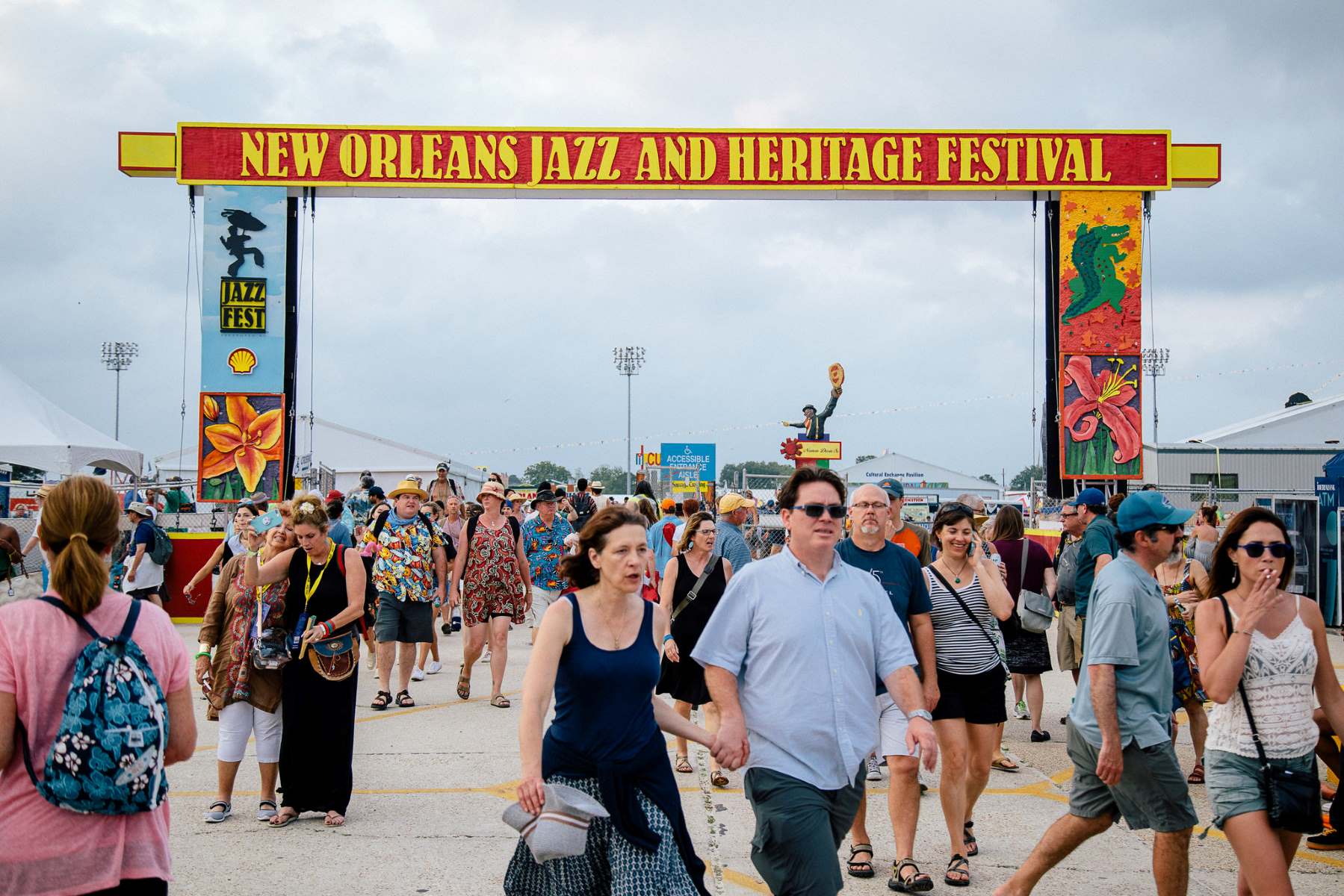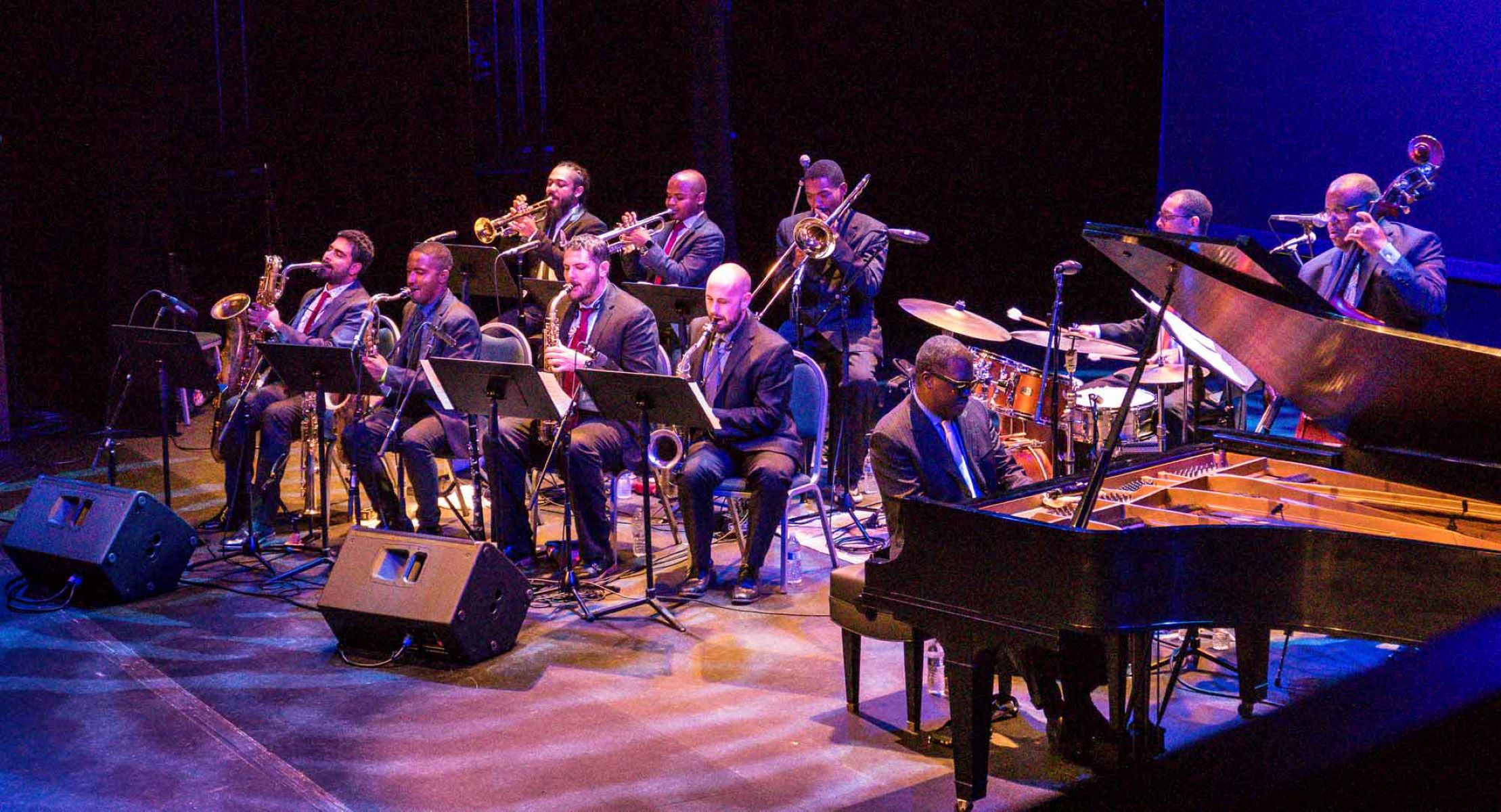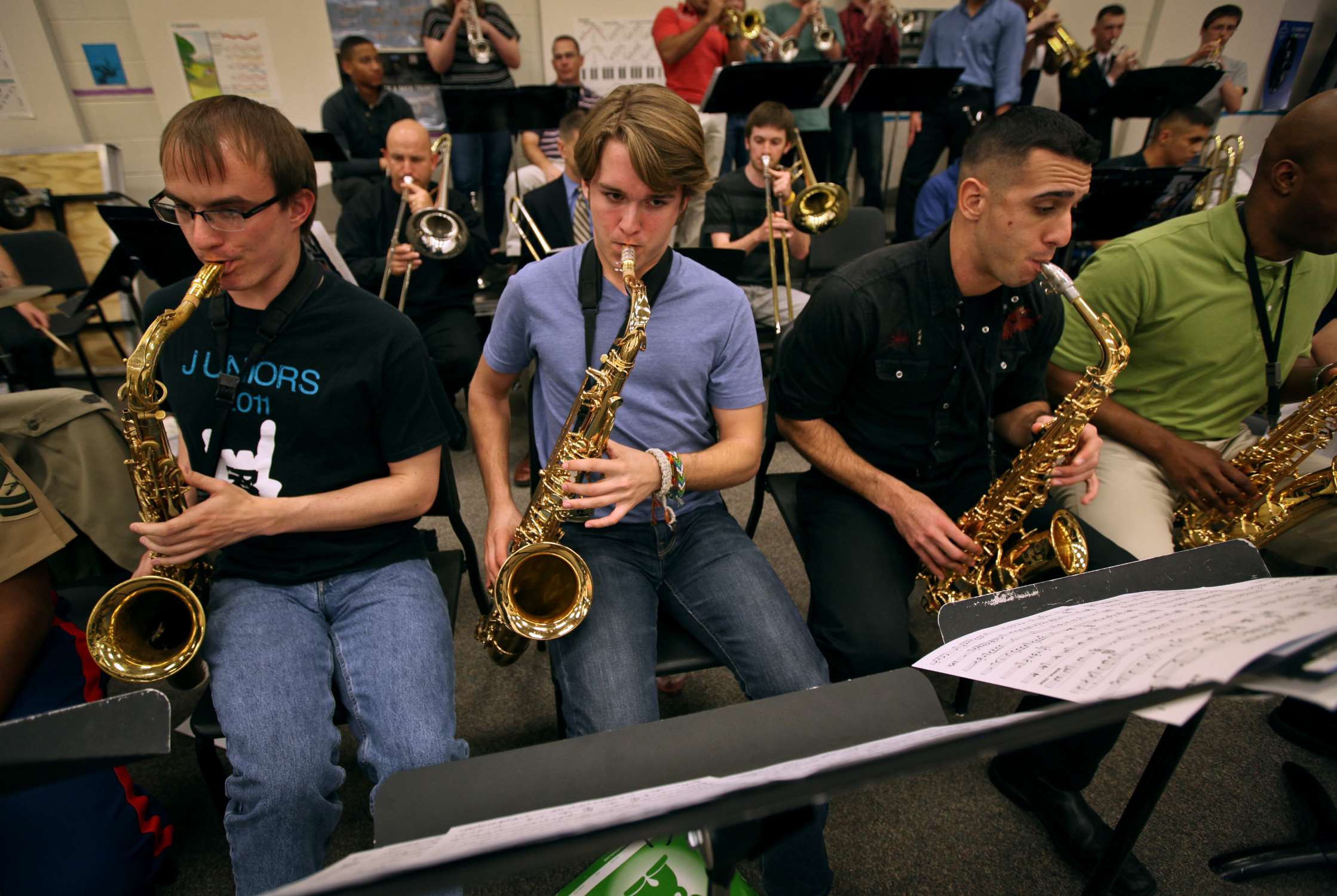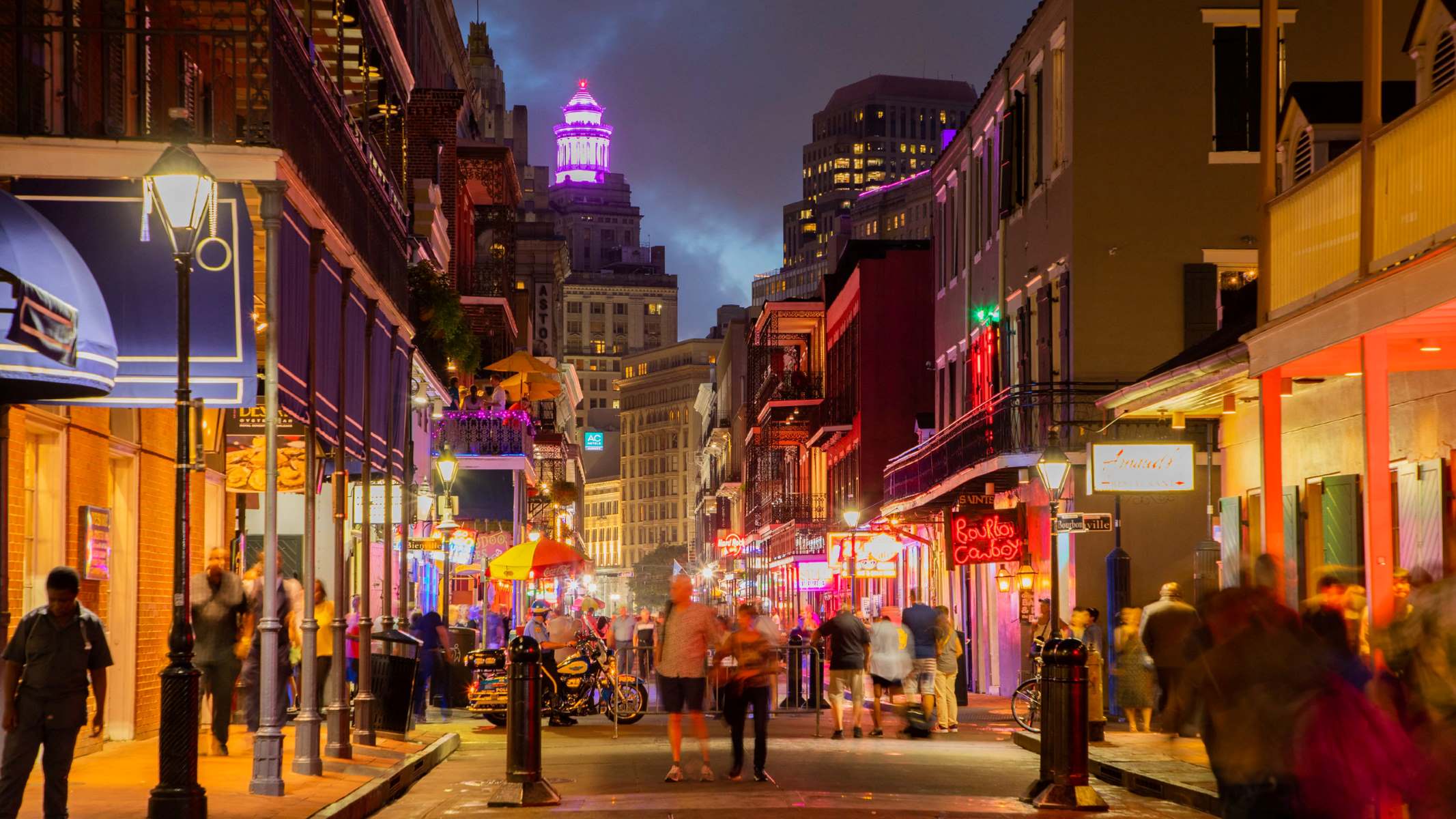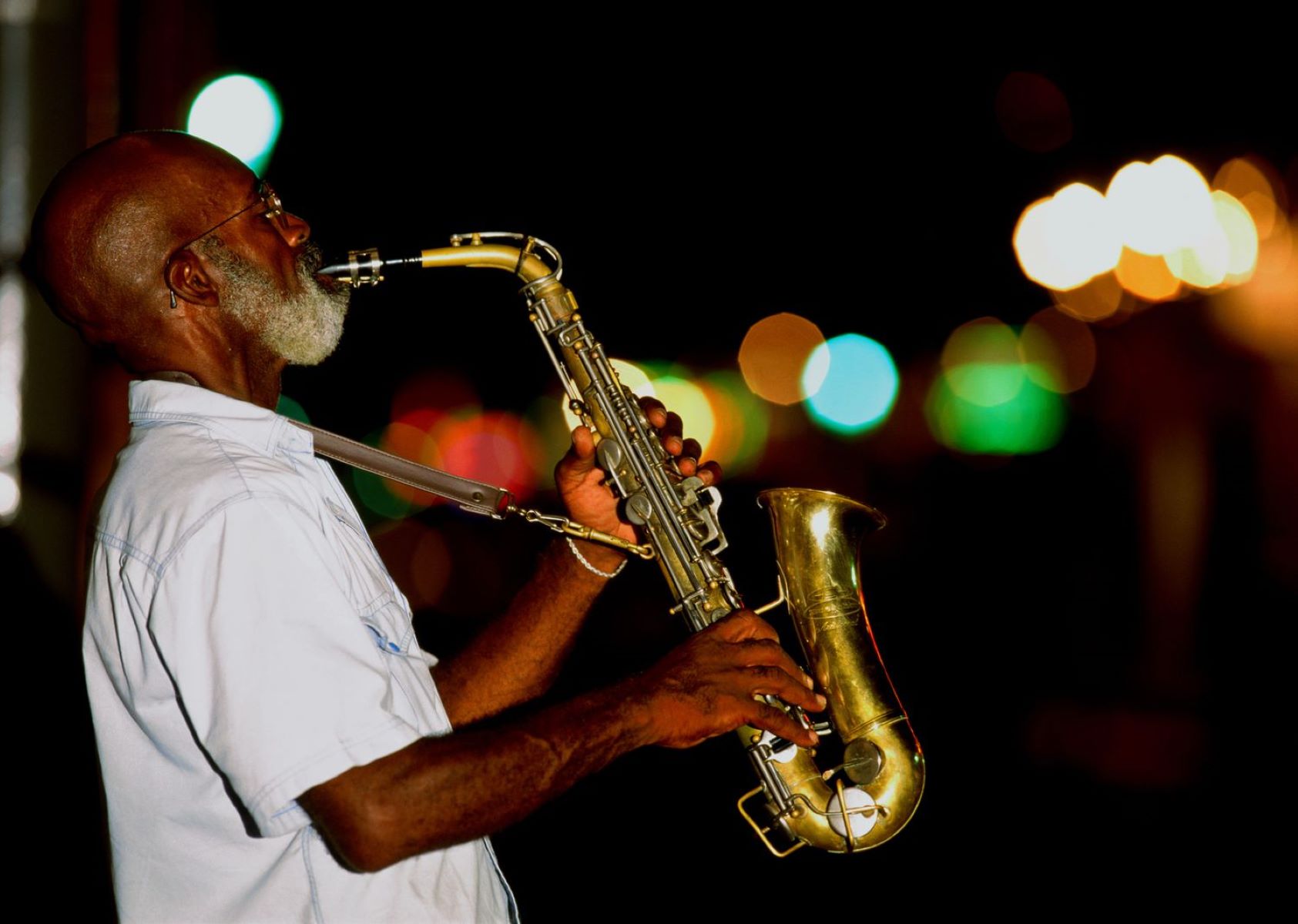Home>Genres>Jazz>Where Does Woody Allen Play Jazz In New York


Jazz
Where Does Woody Allen Play Jazz In New York
Modified: January 22, 2024
Discover the top jazz venues in New York where Woody Allen loves to play his mesmerizing tunes. Immerse yourself in the vibrant jazz scene of the city that never sleeps.
(Many of the links in this article redirect to a specific reviewed product. Your purchase of these products through affiliate links helps to generate commission for AudioLover.com, at no extra cost. Learn more)
Table of Contents
Introduction
Jazz is a genre that has captivated music lovers for decades with its smooth melodies, improvisation, and rich cultural history. New York City, known as the birthplace of jazz, has been a breeding ground for some of the world’s greatest jazz musicians and a hub for jazz performances.
One individual who is not only a renowned filmmaker but also an ardent jazz enthusiast is Woody Allen. Famous for his cinematic masterpieces, Allen’s love for jazz shines through in his films’ soundtracks, as well as his own musical pursuits. In addition to being a clarinetist, Allen has a deep understanding and appreciation for jazz, often incorporating it into the narrative of his films.
In this article, we will explore where Woody Allen plays jazz in New York City, shedding light on the venues where he regularly performs and the impact he has made in the jazz community. Whether you’re a jazz aficionado or simply curious about Allen’s musical endeavors, join us on this exploration of the intersection between jazz and the city that never sleeps.
Woody Allen’s Love for Jazz
Woody Allen’s love for jazz runs deep, for it is not merely a genre of music but a significant part of his identity. He has often expressed his adoration for jazz, proclaiming it as the purest form of art and the highest expression of the human spirit.
Allen’s fascination with jazz began at a young age when he discovered the music of legends such as Louis Armstrong and Sidney Bechet. These early encounters sparked a lifelong passion for the genre, leading him to explore various jazz styles and build an extensive collection of jazz recordings.
As a filmmaker, Allen seamlessly weaves jazz into the fabric of his movies. The iconic soundtracks of films like “Manhattan” and “Sweet and Lowdown” feature jazz compositions that heighten the emotional resonance of the narratives. His use of jazz reflects his deep understanding of the genre and his ability to craft stories that resonate with the spirit of the music.
Aside from incorporating jazz into his films, Allen is also an accomplished clarinetist. He began playing the instrument as a teenager and has since become a proficient jazz musician. Over the years, he has performed with renowned jazz bands and musicians, showcasing his talent and love for the art form.
Allen’s dedication to jazz extends beyond performing and showcasing the music in his films. He is a fervent supporter of the jazz community and has used his platform to champion emerging jazz musicians. Through various collaborations and partnerships, Allen has helped shine a spotlight on talented jazz artists, ensuring that the genre continues to thrive.
Woody Allen’s love for jazz is not just about the music itself, but also about the spirit it embodies. Like jazz, Allen’s work is characterized by improvisation, creativity, and a willingness to take risks. It is this shared ethos that has fueled his connection to jazz and made him a beloved figure in both the film and music worlds.
Jazz Performances in New York City
New York City has long been hailed as the jazz capital of the world, with a vibrant and thriving jazz scene that attracts both local and international talent. From cozy clubs to grand concert halls, the city offers a plethora of venues for jazz enthusiasts to indulge in their love for the genre.
For jazz enthusiasts visiting New York City, iconic venues like the Village Vanguard, Blue Note, and Birdland are must-visit destinations. These historic clubs have played host to some of the greatest jazz musicians of all time and continue to showcase top-tier talent to this day.
The Village Vanguard, located in Greenwich Village, holds a special place in the hearts of jazz aficionados. With its intimate setting and impeccable acoustics, the club has been a haven for jazz artists since 1935. Countless legendary live recordings have been captured within its walls, making it a pillar of the jazz community.
Another renowned establishment, the Blue Note, is a beacon on the jazz landscape. Founded in 1981, this venue has showcased an impressive array of talent, ranging from traditional jazz to avant-garde experimentalists. Its cozy ambiance and commitment to presenting world-class acts have solidified its status as an essential stop for jazz lovers.
Birdland, located in the heart of Manhattan, carries a rich history and boasts a name associated with the legendary jazz musician Charlie “Bird” Parker. Serving as a platform for both established and emerging artists, Birdland offers an immersive jazz experience and a dynamic atmosphere that reflects the diversity of the genre.
These venues, among many others, provide a platform for emerging jazz musicians to showcase their talent alongside renowned figures in the jazz world. From small clubs like Smalls Jazz Club and Mezzrow to larger venues like Jazz Standard and Dizzy’s Club, there is no shortage of places to experience the magic of jazz in the Big Apple.
It is in this vibrant jazz scene that Woody Allen has found his home away from home. Known for his regular appearances at various jazz clubs throughout the city, Allen’s performances have become synonymous with the New York jazz experience. Whether leading his own band or joining forces with other musicians, Allen continues to captivate audiences with his passionate and soulful clarinet playing.
Now that we have explored the jazz landscape in New York City, let’s delve into the specific venues where Woody Allen frequently performs, cementing his status as not only an influential filmmaker but also a respected jazz musician.
Woody Allen’s Jazz Residency
One of the defining aspects of Woody Allen’s presence in the New York City jazz scene is his regular residency at the Carlyle Hotel. The Carlyle, an iconic luxury hotel located on the Upper East Side, has been a haven for jazz aficionados for decades, hosting a series of renowned jazz artists as part of their entertainment lineup.
For over 40 years, Woody Allen has graced the stage at the Carlyle, enchanting audiences with his skilled clarinet playing and infectious passion for jazz. His performances at the hotel’s famed Café Carlyle have become the stuff of legend, drawing in music lovers from all corners of the city and beyond.
During his residency at the Carlyle, Allen typically performs with the Eddy Davis New Orleans Jazz Band. Together, they deliver a delightful mix of traditional New Orleans jazz, ragtime, and swing tunes, transporting the audience back to the golden age of jazz. Allen’s distinctive clarinet playing blends seamlessly with the band’s infectious rhythm, creating an atmosphere that is both nostalgic and captivating.
What sets Allen’s residency apart is not only the quality of the music but also the intimate setting of the Café Carlyle. With its elegant décor, cozy seating, and candlelit ambiance, the venue offers a unique and unforgettable experience for jazz lovers. The audience is able to witness Allen’s undeniable talent up close, feeling the energy and passion radiating from his performances.
Allen’s residency at the Carlyle is a testament to his enduring love for jazz and his commitment to sharing his musical gifts with audiences. It is a rare opportunity to witness a renowned filmmaker and jazz aficionado like Allen perform in an intimate setting, creating an unforgettable night of music and nostalgia.
Beyond his residency at the Carlyle, Woody Allen has also performed at other notable jazz venues in New York City, including the Café Wha? in Greenwich Village and the Iridium Jazz Club. His dedication to live performance and his ongoing contributions to the jazz community have solidified his status as a staple in the city’s vibrant jazz scene.
Join us as we dive deeper into the Carlyle experience and explore the iconic Café Carlyle, the venue that has become synonymous with Woody Allen’s jazz residency.
The Carlyle Hotel
The Carlyle Hotel, a magnificent Art Deco landmark located on the prestigious Upper East Side of Manhattan, has long been synonymous with luxury, sophistication, and elegance. Since its opening in 1930, the hotel has played host to numerous celebrities, world leaders, and discerning travelers seeking the finest accommodations that New York City has to offer.
Stepping into the grand lobby of the Carlyle, one is transported to a world of opulence and timeless glamour. The hotel boasts luxurious suites adorned with classic furnishings, exquisite artwork, and stunning views of the city skyline. With impeccable service and attention to detail, the Carlyle Hotel has earned its reputation as one of the most prestigious establishments in New York City.
Beyond its luxurious accommodations, the Carlyle is also renowned for its exceptional dining experiences. The hotel features several acclaimed restaurants, including The Carlyle Restaurant, which serves delectable cuisine in an elegant setting, and Bemelmans Bar, a beloved New York City institution known for its classic cocktails and live music performances.
It is within the hallowed walls of the Carlyle that Woody Allen has established his jazz residency. The hotel’s intimate and sophisticated venue, Café Carlyle, provides the perfect backdrop for Allen’s performances. With its graceful decor, soft lighting, and plush seating, the café exudes an intimate ambiance that enhances the experience of witnessing Allen’s musical talents.
Allen’s association with the Carlyle spans over four decades, creating a sense of tradition and nostalgia for both the artist and his devoted audience. The combination of Allen’s jazz prowess and the elegance of the Carlyle Hotel creates an enchanting and memorable experience for all who attend his performances.
Not only has the Carlyle Hotel been a sanctuary for Woody Allen’s jazz residency, but it has also become a destination for jazz lovers from around the world. The hotel’s commitment to showcasing top-tier talent and its dedication to preserving the essence of jazz have solidified its place as an iconic venue within the New York City jazz scene.
As we delve further into Woody Allen’s jazz residency, let us explore the renowned Café Carlyle, where Allen and his band, the Eddy Davis New Orleans Jazz Band, bring the magic of jazz to life night after night.
Café Carlyle
Café Carlyle, nestled within the illustrious Carlyle Hotel, is a legendary venue that has become synonymous with Woody Allen’s jazz residency. This intimate and sophisticated cabaret-style club offers a unique and enchanting setting for live performances, allowing audiences to enjoy world-class jazz while immersed in an atmosphere of elegance and charm.
With its plush seating, dimly lit ambiance, and classic decor, Café Carlyle exudes a timeless appeal that harkens back to the golden era of cabaret. The venue’s intimate size creates an immersive experience, allowing guests to feel an intimate connection with the performers on stage.
Throughout the years, Café Carlyle has played host to an impressive array of renowned artists, with Woody Allen’s jazz residency being one of its most beloved and long-standing engagements. Allen, accompanied by the talented Eddy Davis New Orleans Jazz Band, entertains audiences with a captivating blend of traditional New Orleans jazz, swing, and ragtime.
What sets the Café Carlyle experience apart is not only the exceptional talent on stage but also the personal touch that infuses each performance. Woody Allen’s genuine love and passion for jazz shine through in every note he plays on his clarinet, captivating the audience with his skill and infectious enthusiasm for the music.
In addition to Allen’s residency, Café Carlyle regularly hosts other esteemed artists and performers from various disciplines, including cabaret, Broadway, and comedy. These diverse acts ensure that the venue remains a vibrant hub of artistic expression, offering a diverse range of entertainment for its discerning audience.
Whether you’re a die-hard jazz fan or simply looking for a unique and memorable night out in New York City, a visit to Café Carlyle is an experience not to be missed. The combination of world-class talent, intimate ambiance, and impeccable service creates an unforgettable evening that captures the essence of jazz and the timeless allure of the Carlyle Hotel.
In the next section, we will delve into the incredible musicians who join Woody Allen on stage during his residency at Café Carlyle and explore their contributions to his remarkable performances.
Allen’s Regular Jazz Collaborators
Throughout his jazz residency at Café Carlyle and other performances, Woody Allen has had the pleasure of collaborating with an array of talented musicians who bring their own unique flair to his performances. These collaborations have not only enriched Allen’s performances but have also created unforgettable musical moments for the audience.
One of Allen’s regular collaborators is the esteemed jazz banjoist Eddy Davis, who leads the Eddy Davis New Orleans Jazz Band. Davis, known for his virtuosic banjo playing and deep knowledge of traditional jazz, has been a constant presence alongside Allen during his jazz performances. His vibrant and infectious energy on stage perfectly complements Allen’s clarinet playing, creating a dynamic and authentic sound.
Another notable collaborator is Cynthia Sayer, an exceptional jazz banjoist and vocalist. Sayer’s lively and soulful performances add an extra layer of depth and richness to Allen’s jazz residency. Her musical prowess and vibrant stage presence make her a beloved fixture in Allen’s performances, captivating audiences with her skillful banjo solos and melodic singing.
Allen has also had the pleasure of performing alongside talented jazz musicians such as trumpeter Simon Wettenhall, saxophonist Sol Yaged, pianist Conal Fowkes, and trombonist Jerry Zigmont, to name a few. Each musician brings their own expertise and unique style to the performances, contributing to the vibrant and diverse sound that defines Allen’s jazz collaborations.
What sets these collaborations apart is the undeniable chemistry and camaraderie between Allen and his fellow musicians. Their shared love for jazz and their ability to seamlessly blend their individual talents into a cohesive sound is a testament to the magic that can be created when passionate musicians come together to create music.
Allen’s regular jazz collaborators are not only talented musicians but also highly respected figures within the jazz community. Their contributions to his performances have helped solidify his reputation as a formidable jazz musician, further cementing his place in the New York City jazz scene.
As we continue our exploration of Woody Allen’s jazz residency, let’s take a moment to delve into some of the other prominent jazz venues in New York City that have played a role in shaping the city’s rich jazz heritage.
Other Jazz Venues in New York City
New York City is a city renowned for its vibrant jazz scene, offering an abundance of venues where both local and international jazz musicians can showcase their talents. While Woody Allen’s jazz residency at Café Carlyle holds a special place in the hearts of jazz enthusiasts, there are several other iconic venues in the city that have contributed to its rich jazz heritage.
The Village Vanguard, located in Greenwich Village, is one such venue that has played an integral role in shaping the New York City jazz landscape. Since 1935, the Vanguard has been a haven for jazz musicians, hosting legendary artists such as John Coltrane, Bill Evans, and Miles Davis. Its intimate setting and impeccable acoustics create an intimate and immersive listening experience for jazz enthusiasts.
The Blue Note, situated in the heart of Greenwich Village, is another legendary jazz club that has left an indelible mark on the city’s jazz scene. Founded in 1981, the Blue Note has become known for its commitment to presenting world-class jazz acts, ranging from contemporary jazz to Latin jazz and beyond. Its cozy ambiance and dedication to showcasing both established and emerging artists make it a must-visit destination for jazz lovers.
Birdland, located in Midtown Manhattan, carries a rich history and a name associated with the legendary jazz musician Charlie “Bird” Parker. Since opening its doors in 1949, Birdland has been a magnet for jazz aficionados, hosting some of the most talented musicians in the genre. With its vibrant atmosphere and a calendar filled with diverse jazz performances, Birdland continues to be a driving force in the New York City jazz scene.
Other noteworthy jazz venues in New York City include Jazz Standard, known for its focus on presenting the finest contemporary jazz acts, and Dizzy’s Club, which offers breathtaking views of the Manhattan skyline in addition to stellar jazz performances. Smalls Jazz Club, Mezzrow, and Smoke Jazz & Supper Club are also cherished gems within the jazz community, offering intimate settings where artists and audiences can connect on a deeper level.
These venues, among many others, serve as important cultural and artistic hubs that keep the jazz tradition alive and thriving in New York City. They provide a platform for both established musicians and emerging artists to showcase their talent, pushing the boundaries of the genre and ensuring its continued evolution.
As we near the end of our exploration, let’s delve into Woody Allen’s influence on the jazz community and the lasting impact he has made with his musical endeavors.
Woody Allen’s Jazz Influence
Woody Allen’s love for jazz extends far beyond his performances as a clarinetist and his regular jazz residency. His influence on the jazz community is felt through his films, his collaborations, and his unwavering dedication to preserving and promoting the genre.
As a filmmaker, Allen has used jazz as a storytelling device, incorporating it into the soundtracks of his movies to evoke a particular mood or atmosphere. The iconic opening sequence of “Manhattan,” accompanied by the melodic strains of George Gershwin’s “Rhapsody in Blue,” exemplifies Allen’s masterful integration of jazz into his films. By associating jazz with the vibrant energy of New York City, Allen has helped to popularize jazz and create a deeper appreciation for the genre among film audiences.
Allen’s collaborations with talented jazz musicians have further solidified his influence on the jazz community. By featuring renowned artists such as Eddy Davis and Cynthia Sayer in his performances, he not only provides a platform for their talent but also introduces their music to a wider audience. Allen’s endorsement and respect for these musicians have helped to elevate their careers and shine a spotlight on their extraordinary contributions to jazz.
Furthermore, Allen’s dedication to jazz as an art form and his ongoing promotion of the genre have made a lasting impact. Through his performances, he keeps the spirit of traditional jazz alive, inspiring a new generation of jazz musicians and enthusiasts. His unwavering commitment to the genre has helped ensure that jazz continues to thrive in the bustling jazz capital of New York City.
Additionally, Allen’s reverence for jazz icons and his deep knowledge of the genre have garnered him respect within the jazz community. Countless jazz musicians have expressed admiration for his understanding of jazz and his ability to authentically interpret its essence through his music. His attention to detail and his desire to do justice to the music he loves have earned him a place among the beloved figures of contemporary jazz.
Woody Allen’s jazz influence goes beyond his musical abilities or his performances on stage. Through his films, collaborations, and unwavering dedication, he has left an indelible mark on the jazz community. As a filmmaker and jazz enthusiast, he has brought jazz into the mainstream consciousness, ensuring that its timeless beauty and creative energy continue to resonate with audiences around the world.
As we conclude our exploration of Woody Allen’s jazz journey, we reflect on his profound impact on the jazz community and the enduring legacy he has created within the vibrant jazz scene of New York City.
Conclusion
Woody Allen’s love for jazz and his immersion in the vibrant jazz scene of New York City have made him a fixture in the world of jazz and a beloved figure both on stage and on the silver screen. From his adoration of jazz legends to his own performances as a clarinetist, Allen’s passion for the genre shines through in every aspect of his musical journey.
Through his jazz residency at Café Carlyle and collaborations with talented musicians, Allen has not only entertained audiences but has also contributed to the preservation and promotion of jazz. His performances, infused with soul, creativity, and a deep understanding of the genre, have captivated jazz enthusiasts from all walks of life.
The influence of Woody Allen on the jazz community extends beyond his musical endeavors. His films have brought jazz to the forefront, associating the genre with the energy and spirit of New York City. This exposure has helped to create a wider appreciation for jazz among film audiences and has solidified its place in popular culture.
Furthermore, Allen’s commitment to showcasing emerging jazz talent and his collaborations with established jazz musicians have enriched the jazz scene in New York City. By providing a platform for these artists, he has helped to ensure that jazz continues to thrive and evolve.
As we journey through the jazz landscape of New York City, we have explored iconic venues like the Carlyle Hotel and its enchanting Café Carlyle, as well as other renowned jazz clubs that have shaped the city’s jazz heritage. Along the way, we have witnessed the enduring influence and impact of Woody Allen, a true jazz aficionado, on the music scene.
In conclusion, Woody Allen’s love for jazz, his dedication to live performance, and his ability to seamlessly blend his passion for the genre into his artistic pursuits have solidified his status as a respected jazz musician and a cherished figure in the jazz community. His contributions to jazz, both as a performer and as an advocate, will continue to inspire and captivate audiences for years to come, leaving a lasting imprint on the city where jazz truly comes alive – New York City.




